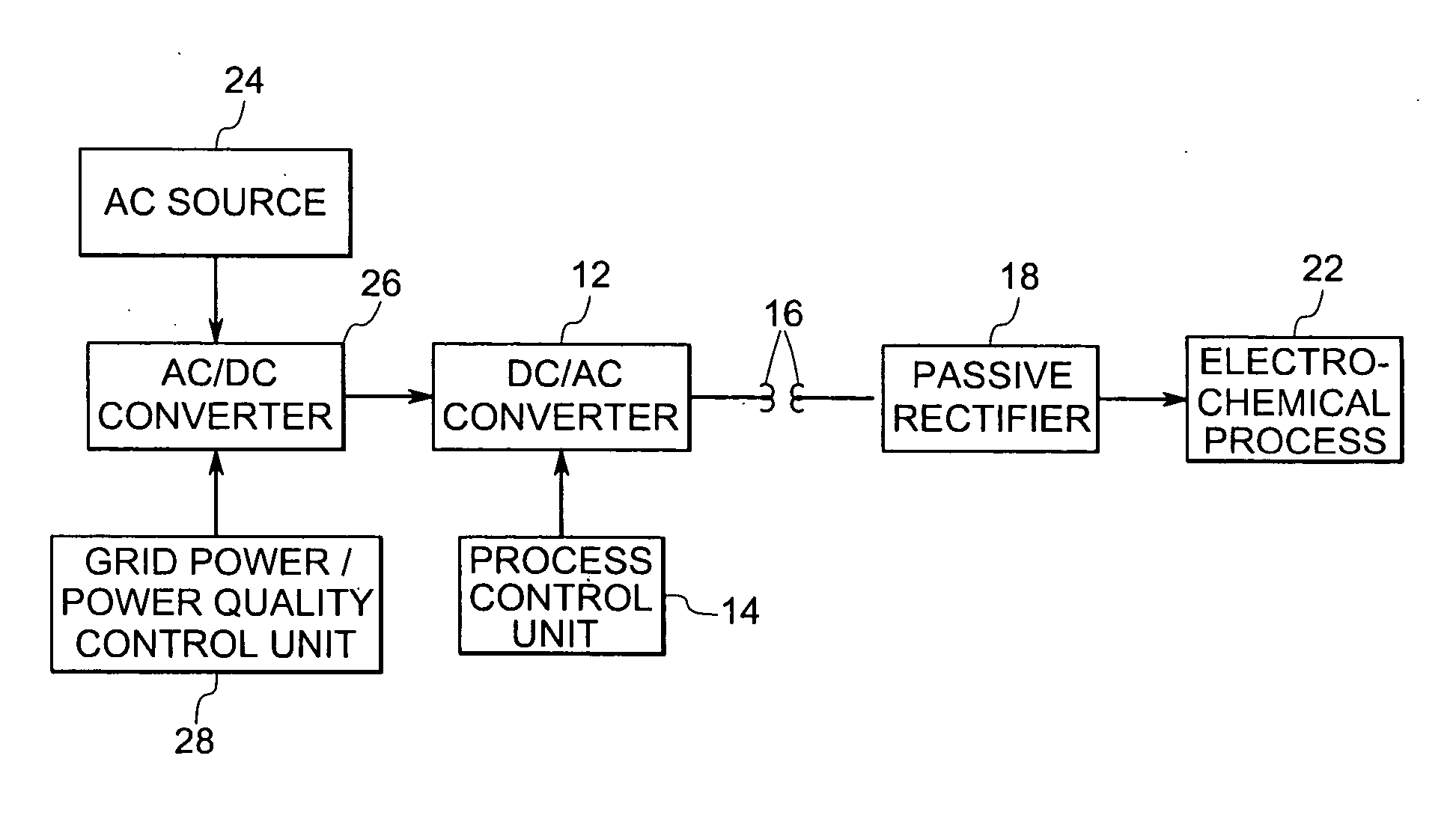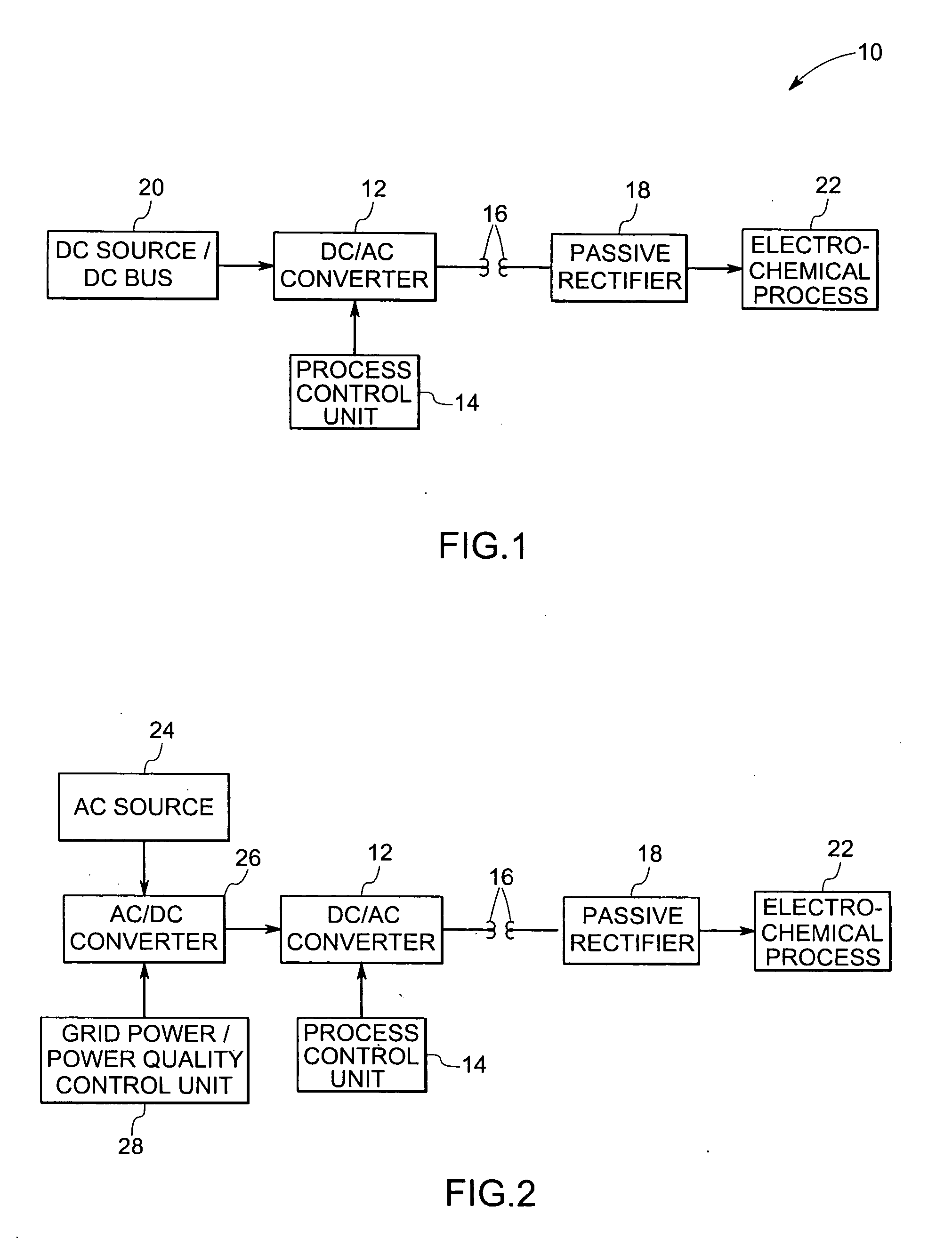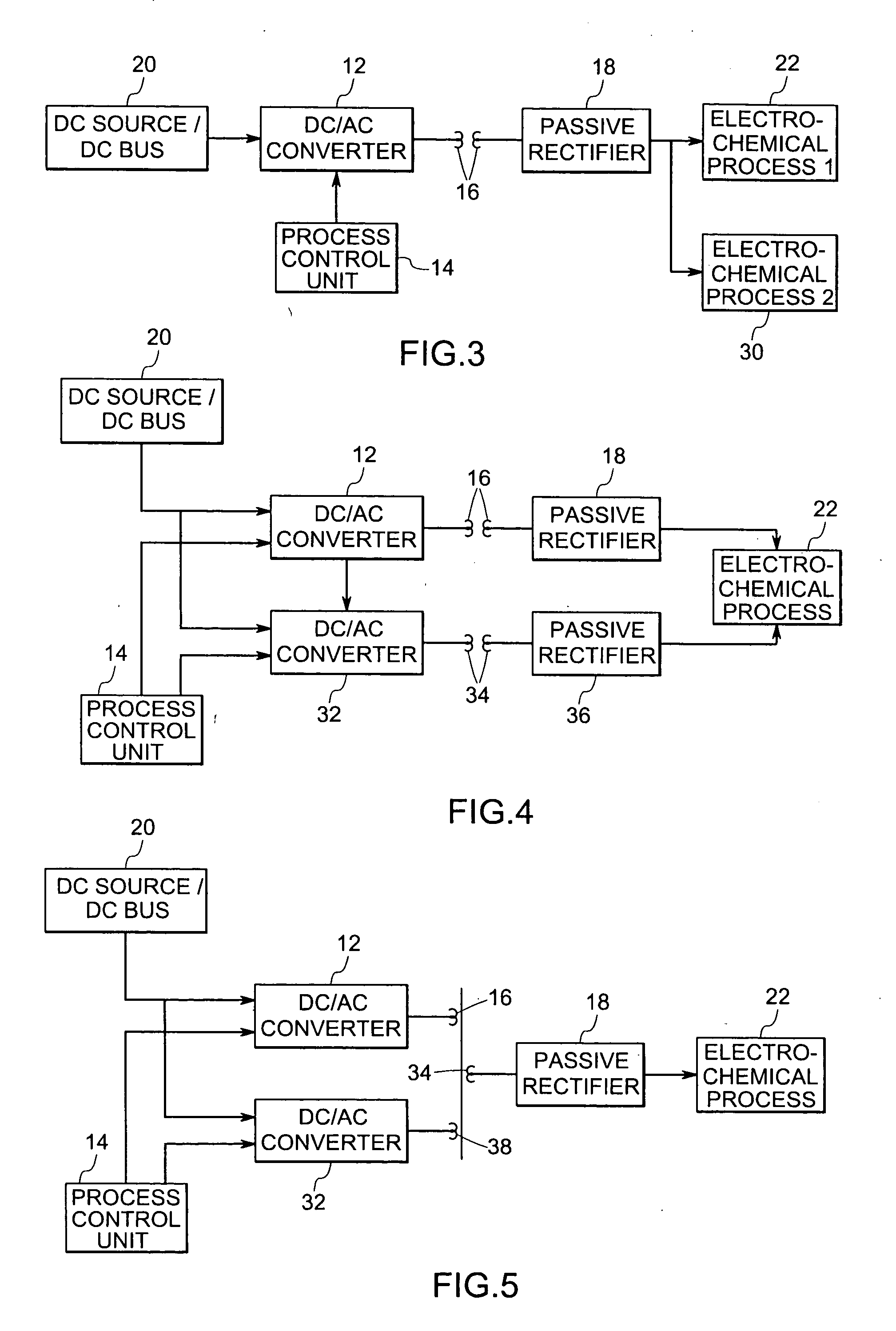Power conversion system and method
- Summary
- Abstract
- Description
- Claims
- Application Information
AI Technical Summary
Benefits of technology
Problems solved by technology
Method used
Image
Examples
Embodiment Construction
[0016] Referring now to FIG. 1, a power conversion system, represented generally by the reference numeral 10, is illustrated. The power conversion system 10 comprises a converter 12, a process control unit 14, a transformer 16, and a passive rectifier 18. In the illustrated embodiment, the converter 12 may be coupled to a DC power source 20. The DC power source 20 may include a photovoltaic system, a solar cell, a battery, a DC transmission line, a high voltage DC bus or the like.
[0017] The converter 12 is configured to convert a power signal transmitted from the DC power source 20 to a controllable AC power signal. As appreciated by those skilled in the art, the converter 12 may include a single-phase inverter, a multi-phase inverter, or a multi-level inverter, or a parallel configuration or a combination thereof. The process control unit 14 is coupled to the converter 12 and is configured to control various characteristics such as frequency, magnitude, power factor, ripple conten...
PUM
| Property | Measurement | Unit |
|---|---|---|
| Power | aaaaa | aaaaa |
Abstract
Description
Claims
Application Information
 Login to View More
Login to View More - R&D
- Intellectual Property
- Life Sciences
- Materials
- Tech Scout
- Unparalleled Data Quality
- Higher Quality Content
- 60% Fewer Hallucinations
Browse by: Latest US Patents, China's latest patents, Technical Efficacy Thesaurus, Application Domain, Technology Topic, Popular Technical Reports.
© 2025 PatSnap. All rights reserved.Legal|Privacy policy|Modern Slavery Act Transparency Statement|Sitemap|About US| Contact US: help@patsnap.com



